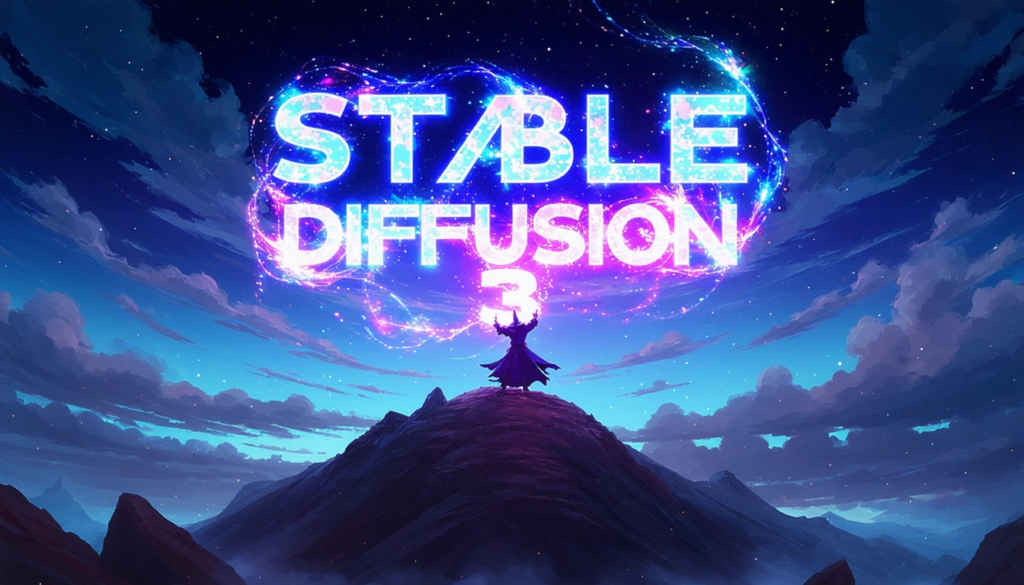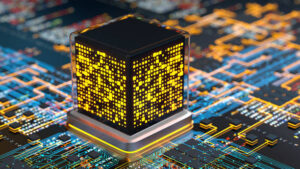Architectural rendering is not an unfamiliar notion. Italian architects like Leon Batista Alberti, Filippo Brunelleschi, and Donato Bramante communicated their designs with axonometric sketches and carefully hand-drawn perspectives during the Renaissance. However, computer-generated pictures had replaced hand-drawn depictions by the late twentieth century. Suddenly, what had taken many hours of meticulous color washing and shadow hatching became a matter of experimenting with sun values and texture mapping in a three-dimensional computer world. With the advent of artificial intelligence, rendering has evolved into guided wordplay: a novel, imaginative method of creating digital collages.
Still, the “original” artistry of architectural rendering has not vanished. Even if computer algorithms and machine learning processes have replaced the architect’s hand, using AI visualization tools still demands imagination, innovation, and experimentation. Architects can push the frontiers of architectural visualization by trying word prompts, exploring digital collages, and even conducting hand-sketch-to-rendering experiments, resulting in more vivid and immersive designs than before. Without further ado, here are the seven best AI tools for unparalleled architectural rendering and visualization capabilities.
Midjourney: Best AI Tools for Architectural Design
Midjourney is probably the best-known AI visualization tool in the architectural business. It is now available on the Discord server, where users can cooperate with the Discord bot to create conceptual imagery.
Midjourney has three basic operational commands: the “/imagine” command, which uses text prompts to a set of renderings; the “/blend” command, which allows architects to combine two images; and finally, the “/shorten” command, which suggests alternative, shorter prompts to achieve better results. It also provides additional text abbreviations, such as image ratio control and negative prompting, which refer to items removed from the composition.
Stable Diffusion: Best AI Architectural Rendering
Stable Diffusion is a text-to-image and image-to-image model that was introduced in 2022. It is primarily based on diffusion techniques, which involve activities such as denoising, inpainting, and super-resolution in computer-generated images. Aside from producing visual representations via text prompts, Stable Diffusion is an excellent tool for image editing.
More specifically, features like inpainting choose specific areas of an existing image (layer masks) for more exact rendering customization. Using a combination of text and image cues, architects can add or remove noise and depth and enhance specific image elements to create sharper-quality renderings.
DALL·E: Best AI rendering tool for creating cohesive visualizations
DALL·E is an AI rendering tool developed by OpenAI, a research organization known for releasing the famous text-to-text model ChatGPT. DALL·E’s seamless integration with ChatGPT enhances the tool’s text-to-image capabilities.
DALL·E may generate images by “filling in the blanks” rather than depending solely on text instructions. For example, it may suggest additional reflections and shadows to make the composition more holistic or keep consistent with a preset visual style, such as painting or photorealistic pictures. DALL·E, like Stable Diffusion, uses text prompts to modify specific sections of an image.
Veras : Best AI rendering tool for fine-tuning images
Veras is sophisticated AI visualization software. It works as a plug-in for popular architecture applications like SketchUp, Revit, and Rhinoceros and as a standalone web-based rendering tool. It is excellent for quickly changing BIM-generated graphics and adjusting their mood, style, lighting, and even geometry.
Architects may fine-tune their designs using features like the Geometry Override Slider, Render Selection, and Render Same Seed, all while exploring many concept iterations in real-time rendering and without any 3D modelling limits.
LookX AI is the best AI rendering tool for early-stage concepts
LookXAI is an AI rendering tool that is suited for early-stage prototyping. Architects can produce first design concepts as a highly adjustable (and trainable) AI model by uploading a collection of reference photos or precedents.
LookXAI contains features like the Style Adapter, Vocab Template, and even a Prompt Assistant to help architects improve their representations’ quality, depth, architectural precision, and style. It also includes an Upscale Image tool, allowing you to repair defects and improve image quality quickly.
mnml.ai: best AI rendering tool for image stylization
mnml.ai is a groundbreaking artificial intelligence application that eliminates the need for endless tinkering with lighting parameters in 3D visualization software. By submitting a preliminary image of the concept, mnml.ai may convert it into various visualization techniques, ranging from day-to-night images and sketches to realistic graphics.
In reality, the software can convert simple sketches into fully rendered images and use text prompts to manage elements like colours, finishes, and lighting in exterior and interior graphics.
ArkoAI: best AI rendering tool for quick visualizations
Like Veras, ArkoAI is a plugin for popular architectural software. However, being a cloud-based platform, its tremendous rendering capabilities make it ideal for quick and flexible material iterations on existing 3D models.
Architects can transform their clay renderings and shaded views into entire design proposals by using introductory text and additional factors to manage the amount of effect the prompts have on the model.
Best AI Tools for Concept Design
Midjourney is highly popular right now. The AI-powered picture-generating tool provides architects with a canvas as large as their creativity. Working from given prompts, Midjourney skillfully crafts photorealistic pictures that can be used to explain conceptual understanding.
While Midjourney may not be able to replace your preferred visualizer, the intelligence program can assist designers in conveying complex designs by creating spectacular visual tales to help explain our vision to customers and stakeholders. Midjourney allows even the most daring architectural ideas to emerge from the imagination and onto the screen, making it a treasure mine for experimental design.
Adobe Firefly
Adobe Firefly, still in development, is already demonstrating the strength of its promise. This new member of the generative AI family aims to rekindle the creative spark in architects and designers alike while optimizing workflow and providing a diverse and reliable platform for creating images, text effects, and other creative content.
Firefly, like Midjourney, is a dynamic companion capable of illustrating unique design concepts using text-to-image prompts. The software is part of the Adobe Suite. Firefly is a trustworthy liaison who fosters productive interactions with colleagues and clients using a well-known and reliable platform.
Many of Firefly’s advertised features are unavailable as a relatively new program. It’s not a stretch to believe that the UI designers didn’t want to lag behind the very popular Midjourney, so they drip-feed users’ features before the software was complete. However, as Adobe Firefly continues to expand, we will see significant development in Adobe’s desire to create smooth transitions across their popular creative tools, which promises to make image creation and editing a breeze in the not-too-distant future.
ARCHITEChTURES: Best AI Tool for Residential Planning
ARCHITEChTURES is a game-changing AI-powered tool for residential planning. It is meticulously built for the discerning architect, reducing decision-making time and increasing efficiency.
ARCHITEChTURES uses cutting-edge artificial intelligence to examine site circumstances, climatic dynamics, financial limits, and customer objectives. This abundance of knowledge reveals a plethora of design alternatives that seamlessly balance form and function while bringing architectural fantasies to life.
ARCHITEChTURES is already a valued ally for many architects, allowing them to overcome limits and achieve unprecedented efficiency. Automation allows for the freedom of tedious chores. With a wide range of design characteristics, it is possible to define boundaries and configure the software to function on all accessible alternatives.
From site planning, where ARCHITEChTURES navigates limits and explores potential, to precise building design, which includes room sizes, window locations, and sustainable material selections, ARCHITEChTURES allows for easy accuracy and correction.
Best AI Tools for 3D Modeling
Kaedim
Kaedim is a highly regarded AI-powered 3D modelling platform with support from the game industry. Kaedim is a leading AI-powered 3D modelling platform with support from the game industry. It takes advantage of the transformative power of machine learning, generative adversarial networks, and natural language processing to transform simple 2D design concepts into astonishingly precise 3D models.
Kaedim acts as an architect dynamically, lifting the burden of manual 3D model production off their shoulders. Architects and designers can use Kaedim to freely explore, iterate, and enhance their design concepts in a virtual space before they take physical form.
Kaedim is crucial for visual communication in the client-facing phase, allowing architects to exhibit 3D models that capture clients’ imaginations. It also bears weight during the construction design, ensuring precise documentation through realistic 3D models. In an industry where precision and realism are essential, Kaedim appears as a valuable asset.
Sloyd.AI
3D modelling is time-consuming. Hello, Sloyd.AI is a pioneer in cloud-based 3D modelling. It’s more than just a tool; it’s an innovative platform that combines machine learning, generative adversarial networks, and natural language processing. It generates high-quality 3D models by extracting precise information from building ideas and producing remarkable representations. Sloyd.AI does more than duplicate the architect’s vision; it extends its precision to bring designs to life with high realism. It frees architects from the time-consuming process of creating physical models, allowing them to explore and refine their designs virtually.
Sloyd.AI proved essential from project inception to completion. It enables architects to exhibit dynamic 3D models to customers, resulting in an immersive experience that static photos cannot provide. Sloyd.AI’s precision ensures that each standard is recorded in the 3D models it generates for construction planning and documentation. Sloyd.AI is the creative partner architects require in the fast-paced field of architectural design.
Autodesk Forma
Autodesk Forma carves out a position for itself as a comprehensive AI-powered planning tool that enables architects and urban planners to construct sustainable, livable communities with greater precision. Autodesk Forma, which runs on a cloud platform, is instantly available from anywhere and integrates with AutoCAD and Revit.
Autodesk’s latest release uses artificial intelligence to simulate the effects of various design decisions on critical factors such as energy consumption, traffic flow, and air quality. The goal is to assist designers in making more informed and sustainable design decisions while improving project sustainability and livability. Autodesk Forma can also help uncover potential design defects before execution, avoiding costly future rectifications.
At essence, even at its early stages, Autodesk Forma is a full architecture AI tool that helps architects develop more intelligent and sustainable cities. It enables informed design decisions, improves time and cost efficiency, and fosters the development of sustainable designs, altering the landscape of urban planning and architecture.
How to Better Utilize AI Rendering Tools in Architecture
The following recommendations and considerations will help you leverage the potential of AI in architectural visualization while avoiding frequent problems connected with this rapidly evolving technology.
Look out for the elephant in the room: It is true that AI rendering software has an astonishing ability to turn thoughts into “convincing” reality. Text prompts, image-to-image models, and sketch-to-rendering features allow architects to swiftly create a finished design. However, these ideas frequently lack refinement, deliberation, and, to some extent, the human touch, resulting in recommendations that are neither believable nor practicable. AI rendering tools are useful for inspiration, experimentation, and early concept representation. Nonetheless, it is critical to maintain creative control over an AI-generated image, paying great attention to features like material textures, lighting effects, and spatial ratios.
Beware of the plagiarism trap: It is well known that AI technology is taught using a variety of information available on the internet. In the case of AI-generated renderings, architects may feed prior images into the AI tool to achieve the desired outcome. Even though there have been no clear standards on how to tackle this problem, being aware of image copyrights and licensing principles may save consumers from future complications and ethical concerns. In fact, feeding AI algorithms with original sketches and other forms of imagery may not only be more morally sustainable, but will also deliver far more authentic and distinctive results.





























